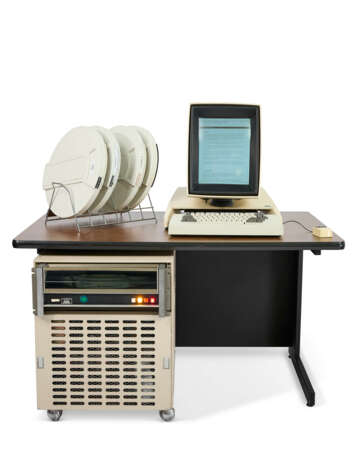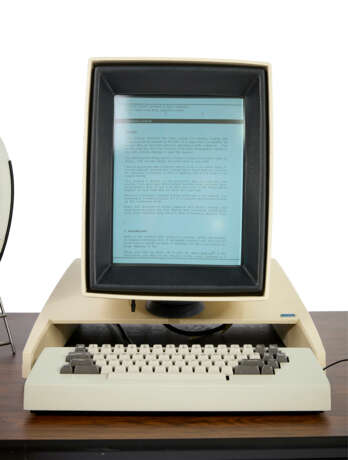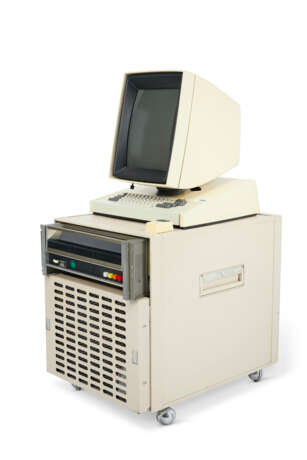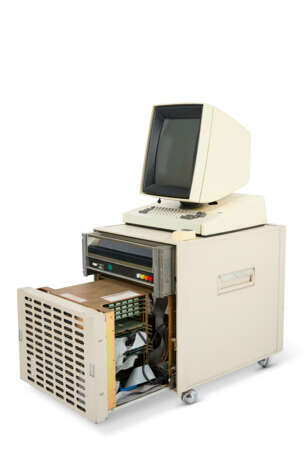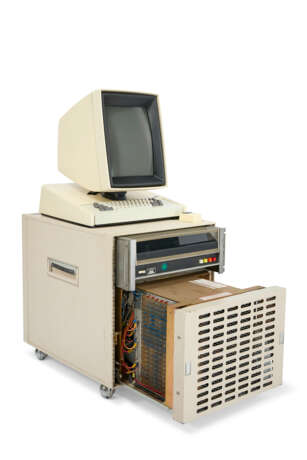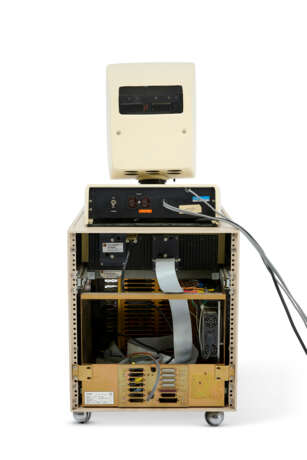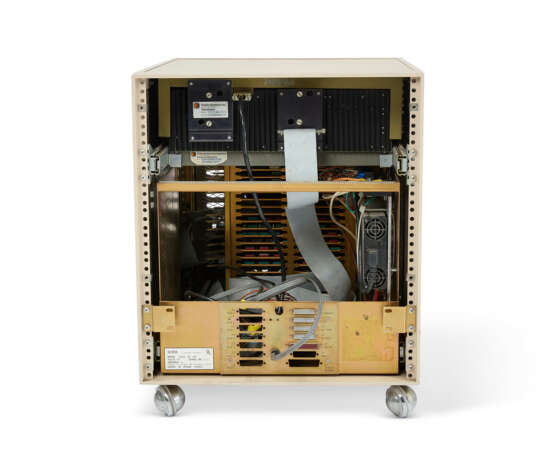ID 1279125
Lot 30 | A XEROX ALTO II XM
Estimate value
$ 10 000 – 15 000
XEROX, 1973
Including a Xerox Alto II display, Xerox Alto II three button mouse and Xerox Alto II keyboard, a Diablo disk drive terminator model 30 and Diablo disk drive model 31 G5
The origins of GUI.
The Xerox Alto, developed in 1973 at Xerox PARC (Palo Alto Research Center), is a pioneering computer notable for its advanced graphical user interface (GUI) that included windows, icons, and menus, operated with a mouse. The Alto's design influenced many later systems, including Apple's Macintosh and Microsoft's Windows. Key features included a bitmapped display, Ethernet networking, and a mouse, making it a groundbreaking machine in the evolution of personal computing and user interface design. Despite its limited initial distribution primarily within Xerox and to a few universities, the Alto was instrumental in the development of modern computing concepts and technologies.
This Alto was acquired from Al Kossow, a notable figure in the field of computer history, particularly known for his work with the Xerox Alto. He worked extensively on preserving Alto software archives and transferring original source code to modern media formats. His efforts are crucial in maintaining the historical legacy and accessibility of the Xerox Alto.
The cabinet: 20 in. (50.8 cm.) high, 20 in. (50.8 cm.) wide, 28 in. (71.1 cm.) deep (approximately)
Provenance
University of Illinois at Urbana-Champaign.
LCM Collection.
Further details
This lot is subject to additional disclaimers. Please carefully review Section E(2), subsection (m) “Vintage Computers and Machines”.
| Auction house category: | All other types of objects, Instruments |
|---|
| Auction house category: | All other types of objects, Instruments |
|---|
| Address of auction |
CHRISTIE'S 8 King Street, St. James's SW1Y 6QT London United Kingdom | |
|---|---|---|
| Preview |
| |
| Phone | +44 (0)20 7839 9060 | |
| Buyer Premium | see on Website | |
| Conditions of purchase | Conditions of purchase |
